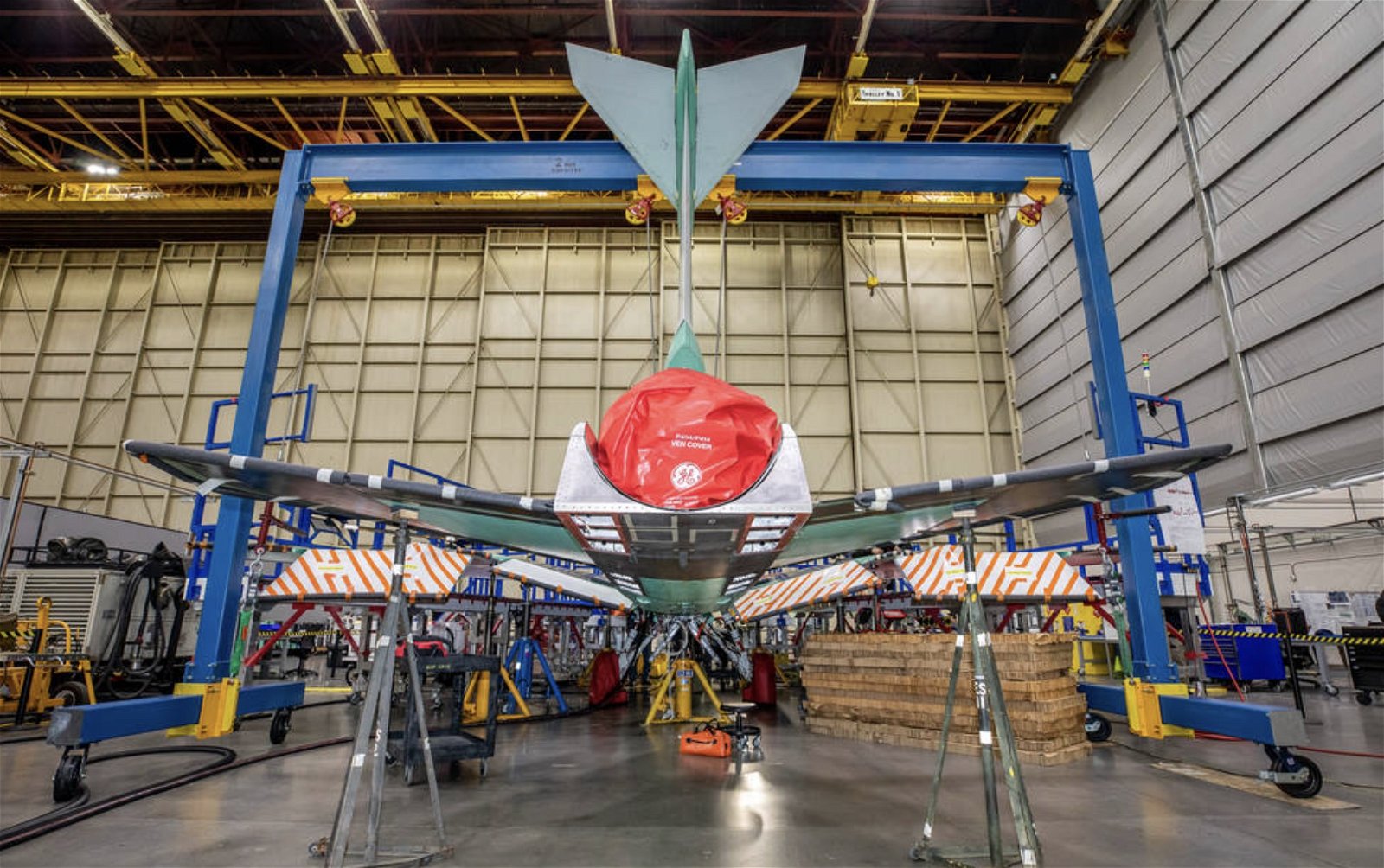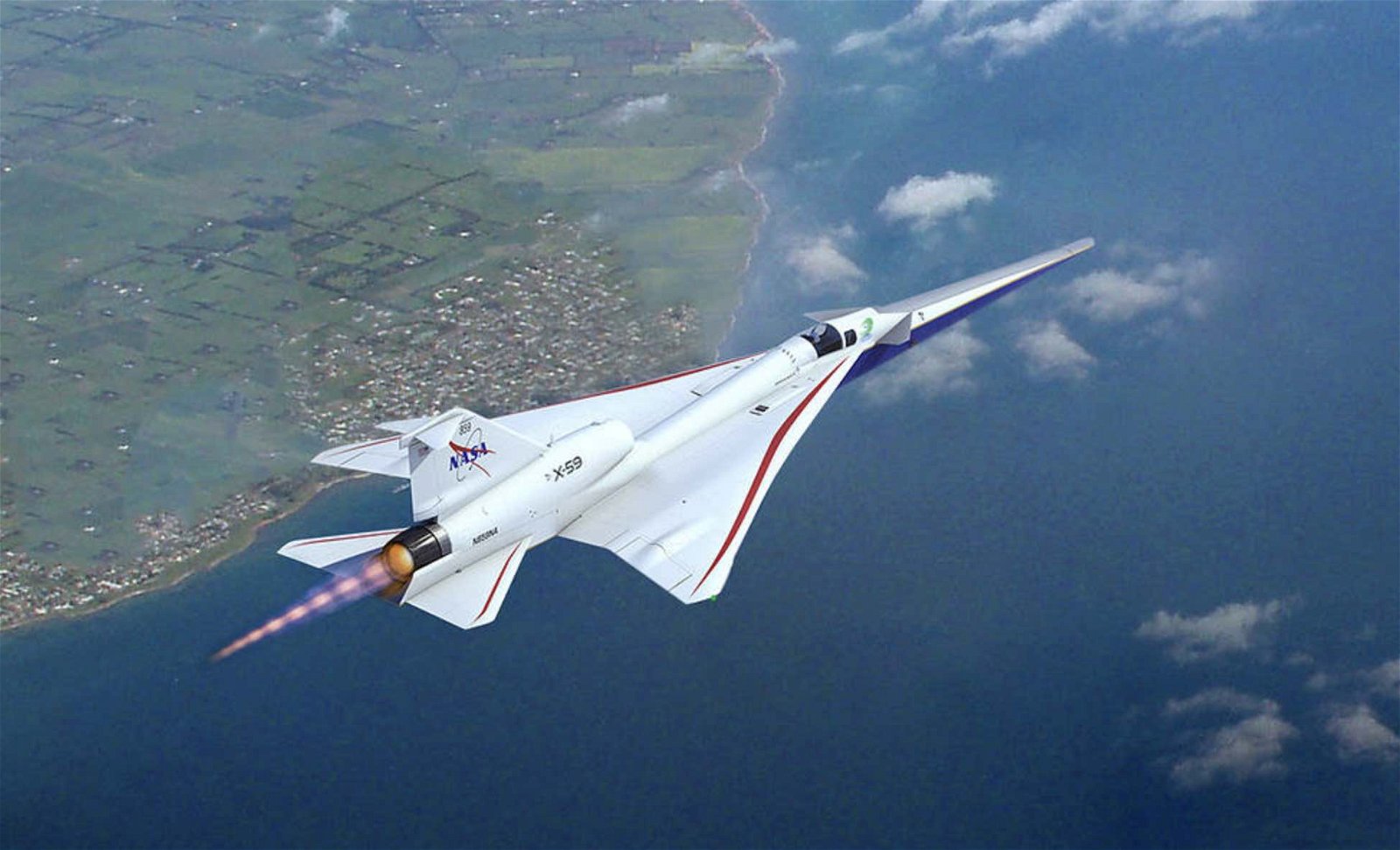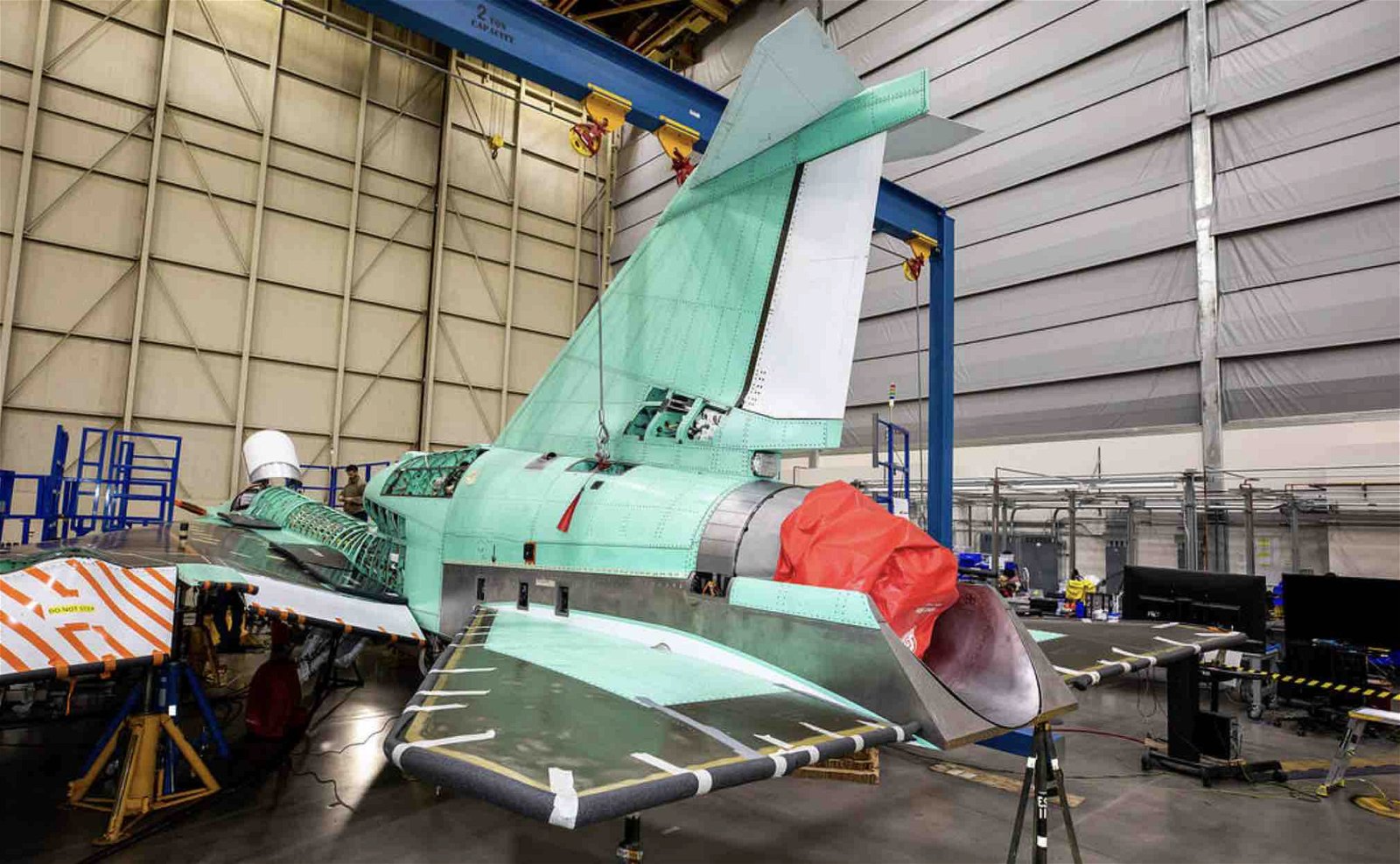Within a hangar at the legendary Lockheed Martin Skunk Works facility in Palmdale, California, NASA’s X-59 recently got something that will help ensure success in the space agency’s ambitions to demonstrate supersonic flight while greatly reducing the thundering sonic booms it creates.
Part of NASA’s ambitious QueSST (Quiet Supersonic Technology) mission, the X-59 aircraft recently underwent the installation of its lower empennage, better known as its tail assembly.
“This installation allows the team to continue final wiring and system checkouts on the aircraft as it prepares for integrated ground testing, which will include engine runs and taxi tests,” read a recent NASA statement, which added that the completed aircraft will reduce sonic booms during supersonic flight “to a quiet sonic thump.”


According to NASA’s Quesst mission outline, once completed, the X-59 will be flown over several populated regions of the United States, from which data will be gathered from residents about the sound the aircraft produces. Thereafter, the information collected will be provided to international regulators for further assessment.
Current regulations set by the Federal Aviation Administration (FAA) prohibit commercial aircraft from supersonic flight over land. However, the allure of reducing flight time has remained an interest for airline companies, both in terms of transportation of goods, as well as for purposes of travel. At supersonic speeds, a five-hour flight from New York to Los Angeles could be reduced by as much as 40%.
NASA says the X-59 will be “the first step to changing existing regulations by demonstrating that an airplane can be designed to produce a quieter sonic ‘thump’ instead of a disruptive sonic boom.” The prototype is expected to make its initial test flights over parts of the U.S. later this year, with hopes that the FAA will adjust existing regulations and allow similar aircraft capable of reduced noise resulting from supersonic flight to operate over land.
In the past, the flight of supersonic commercial airliners, including the Concorde as well as the Tupolev Tu-144, last flown by NASA in 1999, concluded primarily due to the high cost resulting from environmental restrictions related to sonic booms, as well as some lingering safety concerns.
However, a growing number of contenders in the revival of commercial supersonic flight are entering the field. It was announced last summer that American Airlines has already placed non-refundable deposits on 20 Overture aircraft from Boom Supersonic, whose aircraft is designed to carry as many as 80 passengers and at speeds up to Mach 1.7. However, like the Concorde and Tupolev Tu-144, Overture is limited to travel over water.
With the introduction of NASA’s X-59, new technologies that could help facilitate commercial flight at supersonic speeds over land could become a new mainstay for airline companies in the years ahead.


Currently, NASA’s QueSST mission is being carried out within the space agency’s Advanced Air Vehicles Program and its Integrated Aviation Systems Program. Management for the program is overseen by a systems project office spanning NASA’s four aeronautical research field centers, including Langley Research Center, Glenn Research Center, Ames Research Center, and Armstrong Flight Research Center.
If flight tests of the completed prototype this year go according to plan, data collected from the X-59’s maiden test flights could pave the way for overland supersonic travel in the years ahead over the United States and other parts of the world.
“Using this data, new sound-based rules regarding supersonic flight over land can be written and adopted,” NASA said in a statement, which the agency says will potentially “open the doors to new commercial cargo and passenger markets to provide faster-than-sound air travel.”
Below, you can watch a timelapse video of engineers attaching the tail assembly at Lockheed’s legendary Skunk Works facility in Palmdale, California:
Micah Hanks is the Editor-in-Chief and Co-Founder of The Debrief. He can be reached by email at micah@thedebrief.org. Follow his work at micahhanks.com and on Twitter: @MicahHanks.

